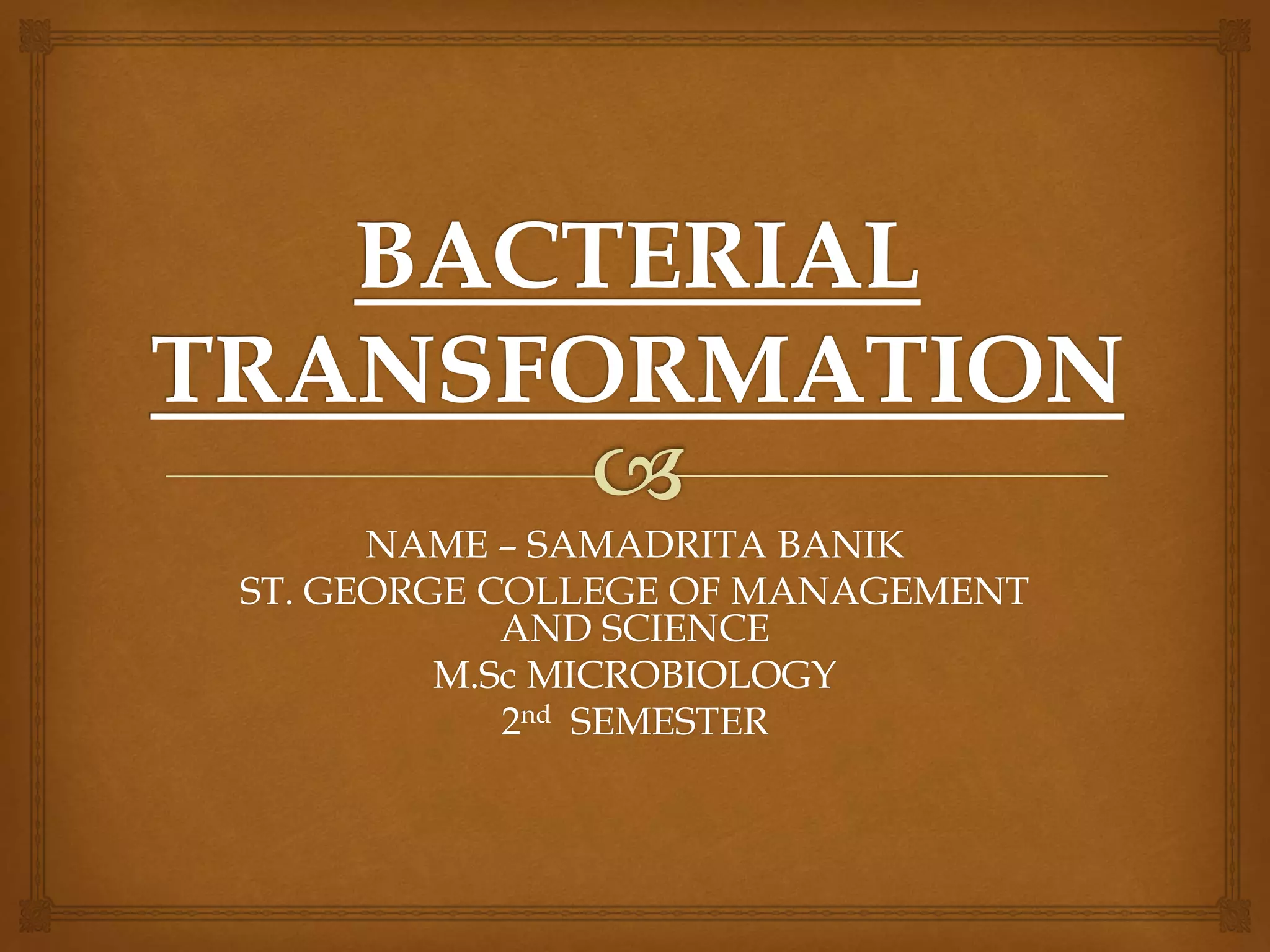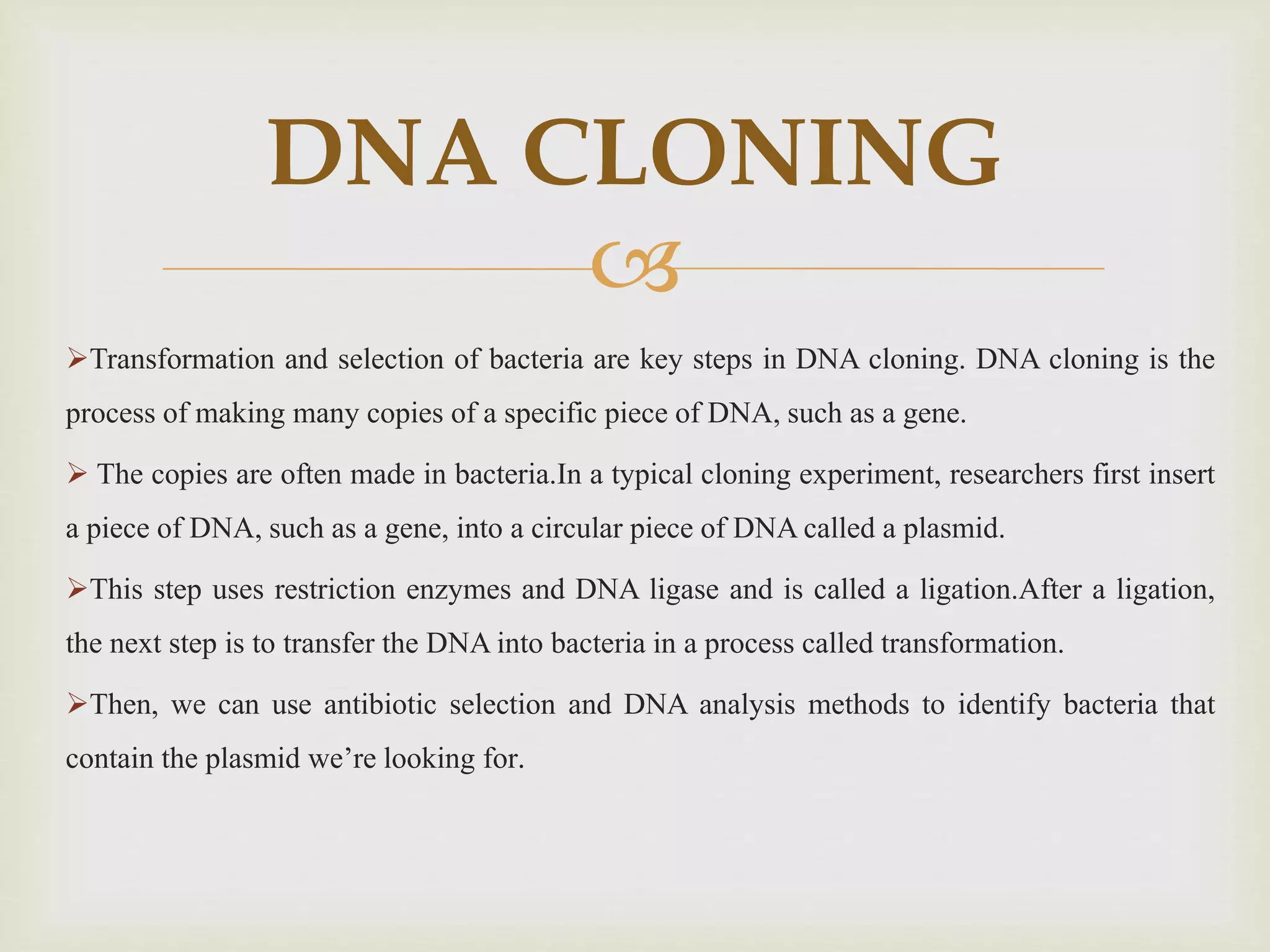Bacterial transformation involves bacteria taking up foreign DNA from their environment. This process allows bacteria to horizontally transfer genes. Transformation is used in DNA cloning to introduce plasmids containing genes of interest into bacteria. The bacteria are then selected using antibiotics to identify those containing the plasmid, which can then be used to produce large quantities of the gene or its protein product.












